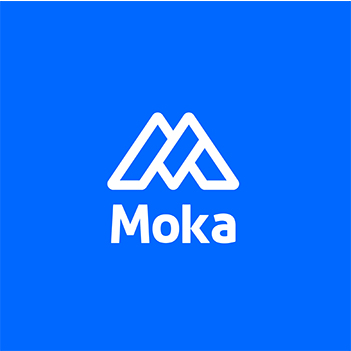15 Tips for Implementing Unconscious Bias Training in 2025

Unconscious bias training plays a crucial role in workplaces to address and reduce bias effectively. This type of training fosters a fair and inclusive environment where everyone feels welcome. Studies reveal that inclusive workplaces retain 35% more employees and that diverse companies generate 35% higher profits compared to others. Unconscious bias training combats unfair treatment, increases employee engagement, and boosts overall business performance. To achieve meaningful results, such training must be conducted regularly rather than as a one-time effort. Consistent unconscious bias training ensures steady progress and positions companies for success in competitive markets.
Key Takeaways
Unconscious bias training helps make workplaces fair and welcoming. Regular training keeps employees happy and improves company success.
Check what your workplace needs by doing a bias review. Ask employees for feedback to find areas to improve.
Pick the best training style—like in-person, online, or both. Match it with your team's values to keep them interested.
Let people talk openly during training by setting rules. This makes it safe for everyone to share their ideas about bias.
Offer follow-up sessions and chances to keep learning. This helps remind employees of lessons and supports growth.
Preparing for Effective Unconscious Bias Training

Assessing Organizational Needs
Conducting a bias audit to identify key areas of concern.
Start by checking for bias in your workplace. This helps find problem areas. Use numbers and data to be accurate:
Check things like training completion and what employees remember.
Look at diversity stats and employee feedback scores.
Short surveys and behavior checks can also help. These tools show patterns and areas needing work. Collecting this information builds a strong base for training.
Gathering employee feedback to understand workplace dynamics.
Ask employees for their thoughts about the workplace. Use surveys, group talks, or private chats to learn more. Workers often notice bias in their daily tasks. Their ideas can help make training better. When employees feel listened to, they join in and support the training.
Securing Leadership Support
Educating leaders on the value of addressing unconscious bias.
Leaders must support bias training for it to work. Teach them how bias affects the workplace and results. Show proof that leaders help create change. For example:
Evidence Description | Key Findings |
|---|---|
Training success | Works best when leaders are involved. |
Long-term results | Needs to be part of company rules. |
Cultural change | Leaders improve awareness and actions. |
Start with managers and decision-makers. Give them tools like checklists to use daily. This helps leaders show inclusive behavior, setting an example for everyone.
Aligning training goals with organizational priorities.
Match training goals with your company’s main focus. For example, if your company values creativity, show how different ideas help innovation. When training fits business goals, it becomes a smart investment, not just an extra task.
Selecting the Right Training Approach
Evaluating in-person, virtual, or hybrid training formats.
Pick the best training style for your team. In-person training helps teamwork with group activities. Virtual training is flexible and can include fun games. Hybrid training mixes both styles, which works well for different teams.
Training Format | Effectiveness |
|---|---|
In-Person Training | Helps learning and teamwork. |
Virtual Training | Flexible but less engaging than in-person. |
Think carefully to choose the format that fits your team best.
Choosing a method that aligns with organizational culture.
The training style should match your workplace values. If teamwork is important, pick interactive sessions. If your company loves new ideas, try tools like virtual reality. A good match helps employees see why training matters to their jobs.
Partnering with Skilled Facilitators
Finding experts in bias training
Picking the right trainer is very important. Look for trainers who know a lot about bias and workplaces. Good trainers have years of experience and handle tough topics well. They make people feel safe to talk about hard issues.
When choosing trainers, ask about their past work. Have they trained companies like yours? Do they understand your industry’s problems? Trainers with the right experience can adjust their lessons to fit your needs. Also, check if they use proven methods. This makes sure the training is based on facts and gives real results.
Checking trainers’ success history
A trainer’s past work shows how good they are. Look for results from their old training sessions. For example, great trainers help companies achieve:
Metric | What It Means |
|---|---|
More diverse and qualified job applicants after training. | |
Employee retention | Workers stay longer and feel happier at work. |
Engagement scores | Higher scores show workers are more motivated and involved. |
Equity in salaries | Fairer pay for women and underrepresented groups. |
ERG contributions | Employee groups help more with company goals. |
These results show how bias training helps. You can also ask for reviews or examples from other companies. Good feedback shows the trainer can make a big difference.
By working with skilled trainers, you can create real change. Their knowledge makes training meaningful and improves workplace culture over time.
Implementing Unconscious Bias Training

Setting Clear Objectives
Defining success metrics for the training program.
Set clear goals to measure how well training works. Use surveys to check if employees understand bias better. Watch workplace behavior to see if actions improve. Look at hiring and retention numbers to see changes.
Metric | Description |
|---|---|
Check if employees learn more about bias after training. | |
Behavior Changes | Watch how people act and make decisions at work. |
Compare hiring and promotion stats before and after training. | |
Continued Learning | Offer follow-ups to keep lessons fresh and progress steady. |
These goals help track success and match training to company needs.
Communicating goals to participants in advance.
Tell employees the training goals before it starts. Explain how it fights unfair treatment and supports equality. When workers know the purpose, they join in more. Use simple words to explain what they’ll learn and how it helps everyone.
Creating a Safe and Inclusive Environment
Establishing ground rules for respectful discussions.
Make rules to keep talks respectful during training. Ask everyone to listen and not interrupt others. Rules help people feel safe to share ideas. For example, remind them to focus on ideas, not personal comments.
Encouraging open dialogue without fear of judgment.
Create a space where workers can talk about bias freely. Use group activities or anonymous tools to make sharing easier. When people feel safe, they think about their own biases and improve.
Using Engaging and Interactive Methods
Incorporating role-playing, case studies, and group activities.
Fun activities make training better. Role-playing shows different views, and case studies show real problems. Group tasks teach teamwork and fair actions. These methods make lessons easy to understand and use.
Leveraging multimedia tools to enhance learning experiences.
Use videos, pictures, and online tools to make learning fun. These tools explain hard ideas in simple ways. For example, a short video can show bias better than a long talk. This helps all types of learners stay interested.
Customizing Content for Relevance
Adjusting materials to match workplace culture and values.
Training content should fit your workplace's culture and values. Employees learn better when examples match their daily tasks. For instance, if teamwork is key, use examples about working together. This helps employees see how training connects to their jobs.
Getting feedback from workers is important to improve training. Feedback shows if the training fits the company’s goals and helps learning continue. Check these points:
Feedback Type | What It Shows |
|---|---|
Why Feedback Matters | Feedback checks if training works and fits the workplace. |
Matching Culture and Goals | Feedback ensures training matches company values and goals. |
Better Investment Returns | Good training boosts the value of the company’s investment. |
Supporting Ongoing Learning | Custom training builds a habit of learning in the workplace. |
By making materials relevant, you keep workers interested and set up success.
Solving industry-specific problems and biases.
Each industry has its own bias challenges. Fixing these makes training more useful. For example, tech jobs often deal with gender bias. Healthcare might face bias about patient backgrounds. Find these issues and include them in training. This way, workers get tools to handle bias in their jobs.
Encouraging Self-Reflection and Growth
Adding activities to help workers think about their own biases.
Thinking about personal bias helps people understand themselves better. Add tasks where workers write about times they judged others unfairly. These tasks help them notice patterns in their thoughts and actions.
Self-reflection helps workers understand bias deeply. It also gives them a safe space to think without fear. This step is key for real change to happen.
Giving tools for ongoing self-checks and growth.
Provide tools to help workers keep improving and spotting bias. Tools like feedback surveys or emotional intelligence tests can show progress. For example:
Tool/Program | Company | Results Achieved |
|---|---|---|
360-degree feedback | PwC | |
Emotional Intelligence Test | United Way | 30% better teamwork |
These tools help workers grow and take action to improve. Adding them to training builds a workplace focused on learning and growth.
Following Up to Keep Training Effective
Strengthening Key Lessons
Sharing extra resources like videos and articles.
It’s important to remember lessons from bias training. Share videos, articles, or podcasts to help employees keep learning. Studies show that seeing the same ideas often helps people remember better. Send these resources regularly, like in monthly emails. You can also make a shared folder where everyone can find helpful materials.
Hosting refresher sessions to stay focused.
Refresher sessions remind employees about reducing bias. These can be short online meetings or fun workshops. Activities like role-playing help people practice what they’ve learned. Plan these sessions every few months to keep bias awareness strong in your workplace.
Checking Training Success
Asking for feedback through surveys or interviews.
Feedback shows how well the training worked. Use surveys, group talks, or private interviews to learn what employees think.
Feedback Method | What It Does |
|---|---|
Surveys | Quick way to see what employees liked or didn’t like. |
Group Discussions | Lets employees share ideas and thoughts together. |
Private Interviews | Helps get personal and detailed feedback. |
Online Feedback Tools | Makes it easy to collect and study answers from employees. |
This feedback helps improve future training and shows what works best.
Watching changes in workplace behavior.
Look for changes in how people act at work. Use tools like tests to see if bias awareness has improved. Check hiring and promotion stats to see if diversity is growing. Also, track how happy and engaged employees feel to measure progress.
Making Bias Awareness Part of Daily Work
Encouraging leaders to show inclusive actions.
Leaders should set an example by being fair and open. They can ask for different opinions and avoid biased choices. For instance, one company saw better teamwork and faster projects when leaders acted more self-aware. When leaders show fairness, others follow their lead.
Adding bias checks to daily decisions.
Help leaders think about bias before making choices. Use reminders or prompts to encourage reflection. Review diversity stats often and hold follow-up meetings. These steps make fairness a habit and create a better workplace for everyone.
Promoting Continuous Learning
Offering ongoing training opportunities for deeper understanding
Unconscious bias training should not stop after one session. Think of it as a journey, not a single event. Companies that focus on learning instead of just rules see better results. This helps build a workplace that values fairness and growth.
Offer programs that mix learning with real tools. For example:
Run workshops about problems employees face every day.
Use online lessons so workers can learn anytime.
Plan practice sessions to apply what they’ve learned.
These activities keep employees interested and help them remember lessons. Involving leaders in these programs also builds responsibility. Leaders who join show others how to act fairly.
By giving ongoing chances to learn, you can hire better talent, spark new ideas, and create a fairer workplace. These efforts also make employees happier and more likely to stay.
Celebrating progress and sharing success stories
Recognizing progress is key to keeping people motivated. Celebrate wins to show employees their work matters. For example, share how diversity improved or tell stories of workers using their training.
Success stories encourage others to take part. Share these stories in emails, meetings, or events. For instance:
Show how a team used bias training to work better together.
Highlight a leader who hired more fairly.
These celebrations inspire employees and show why training is important. They remind everyone that small steps lead to big changes over time.
By encouraging learning and celebrating wins, you build a workplace that values fairness and growth. This makes unconscious bias training a lasting part of your company’s culture.
Unconscious bias training helps create a fair workplace. It makes sure everyone feels respected and important. Quick training sessions often don’t fix deep biases. Ongoing training keeps the lessons strong and employees aware. Companies that focus on diversity do better financially and work better as teams. By planning well, using good methods, and checking progress, workplaces can make lasting improvements.
FAQ
What is unconscious bias?
Unconscious bias means judging people without knowing you're doing it. These judgments come from your past, culture, or experiences. They can change how you act or decide, even if you think you're being fair.
Why is unconscious bias training important?
This training helps you notice hidden biases and reduce their effects. It builds teamwork, fairness, and better decision-making. By learning about bias, you help create a more equal and welcoming workplace.
How long does unconscious bias training take?
Most sessions last 2 to 4 hours. Good programs also include follow-ups, refreshers, or extra learning chances. These help you remember lessons and keep improving.
Can unconscious bias be completely eliminated?
You can't fully get rid of unconscious bias, but you can control it. Training makes you aware of biases and teaches ways to handle them. Keep learning and reflecting to improve over time.
How do I measure the success of unconscious bias training?
Watch for changes in how people act at work. Check diversity numbers and ask employees for feedback. Success shows up as better teamwork, fairness, and inclusivity in decisions.
From recruiting candidates to onboarding new team members, MokaHR gives your company everything you need to be great at hiring.
Subscribe for more information

